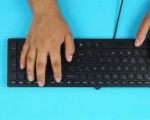BIOS Settings to Boot from USB on HP
- 1. Overview of BIOS Settings for HP
- 2. Pre-requirements for Booting from USB
- 3. Step-by-step Guide to Access BIOS
- 4. Common Issues and How to Troubleshoot
- 5. Useful Tips for a Smooth Boot Process
- 6. Why Consider Ninja Stik for USB Booting
1. Overview of BIOS Settings for HP
Booting from a USB drive is a straightforward process, but to get it right on your HP laptop or desktop, you need to configure the BIOS settings. BIOS (Basic Input/Output System) is the firmware that controls hardware during the booting process, and accessing its settings allows you to set your computer to boot from a USB drive instead of the internal hard drive. Knowing how to properly navigate the BIOS on your HP device will make booting from USB simple, and can be particularly helpful when you're looking to install a new operating system or run a diagnostic tool.
2. Pre-requirements for Booting from USB
Before diving into the BIOS settings, make sure you have the following:
- A USB drive with bootable content (e.g., a bootable Windows installation USB or Linux distribution).
- Knowledge of your HP device model and BIOS version, as the process may slightly differ between different models.
- A working keyboard and mouse (if needed, as some BIOS settings might require you to make adjustments).
Once you confirm these requirements, you're ready to proceed with accessing the BIOS and configuring the boot order.
3. Step-by-step Guide to Access BIOS
Follow these steps to enter BIOS and set the boot order on your HP device:
- Power off your HP device completely.
- Turn it back on, and immediately press the ESC key repeatedly (or F10 depending on your model) until the BIOS menu appears.
- In the BIOS menu, navigate to the Boot Options tab using the arrow keys.
- Once inside the Boot Options, locate the option that lists boot priorities. This might be labeled as Boot Order or Boot Device Priority.
- Using the arrow keys, move the USB device to the top of the boot priority list.
- Save the changes and exit the BIOS by pressing F10 (or the designated key for your HP model).
Your device will now boot from the USB drive, provided it is properly connected. If not, check your USB drive for issues or try another USB port.
4. Common Issues and How to Troubleshoot
Sometimes, even after configuring the BIOS settings, users encounter issues. Here are a few common problems and how to troubleshoot them:
- USB not detected: Ensure the USB drive is properly inserted into a functional USB port. Try using a different port if necessary.
- Incorrect boot order: Double-check the boot order settings in BIOS to ensure the USB drive is listed first.
- Bootable USB not working: Make sure the USB is correctly formatted and contains bootable content. Tools like Rufus or the Windows Media Creation Tool can help create a bootable USB.
5. Useful Tips for a Smooth Boot Process
Here are a few extra tips to ensure your boot from USB process goes smoothly:
- Disable Secure Boot in BIOS if you are using a non-Windows OS, as it might prevent booting from USB.
- Keep your BIOS updated to avoid compatibility issues with newer USB devices.
- If you're using a bootable Linux USB, try changing the USB format from FAT32 to NTFS for better compatibility with larger files.
6. Why Consider Ninja Stik for USB Booting
If you're looking for a reliable and fast USB booting solution, consider the Ninja Stik. It offers seamless boot performance and is optimized for a wide variety of operating systems. With Ninja Stik, you'll never have to worry about slow or unsuccessful boots again. Plus, it’s easy to use and affordable for anyone who wants to streamline their boot process.
Discover more about how Ninja Stik can improve your USB booting experience by visiting the official website for more details!





























